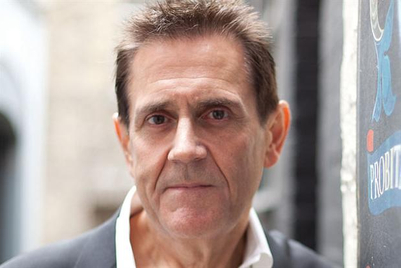.jpg&h=570&w=855&q=100&v=20250320&c=1)
They say that a goldfish has the least attention span of all creatures—great and small. Which is why it is content to go round and round a goldfish bowl without getting particularly weary of the view. Since most of our advertising is directed towards a younger demographic, this appears to be what we are really dealing with.
If accepted wisdom is to be heeded, today’s audience gets tired of reading more than five words in a headline. And body copy? Don’t even bother.
Attention deficit disorder is being blamed for a lot of society’s ills. Advertising is the least of its problems.
For those who decry the fall of long copy ads, here are a few encouraging words. The form may have become a relic of the past. But what it taught us, as children learning advertising, is eternal.
The long copy ad had its day in the sun ever since David Ogilvy sat down to write an ad for Rolls Royce. And that would become the template for the perfect long copy ad.
Begin with a cracker of a headline. Start the body copy with a compelling line. Tell the product and brand story with as much detail as possible, couched in witty banter. End with a sentiment that neatly ties up the story with a ribbon and a bow.
David Ogilvy later told an interviewer, and I am paraphrasing, “I was young; I was new to advertising. I just kept trying till I worked it out.”
And thus was born the venerable, ‘At 60 miles an hour the loudest noise in this new Rolls Royce comes from the electric clock.’ Good luck trying not to read the rest of that ad.

There are different styles, of course. There were the wonderful Tim Delaney ads for Timberland that draw attention to the brand’s legacy and philosophy. One reading of the ad headlined, ‘From the days when men were men and so were the women’, will give you an idea of how a gripping story can be written.
On the other hand, there were David Abbott’s Sainsbury ads that spoke about the products, new arrivals, promotions, and sales without drawing any attention to the cleverness of the writing. That is genius on a completely surreal scale.
In contrast to most writers, Neil French joined advertising at the tender age of 47. At Ball Partnership, Singapore, he really hit his stride. Always the cynic, he decided that this business was run by a bunch of idiots and went out of his way to try to prove it.
Fire up Google and look up his ad for Dove. About 2,000 words of utter but hilarious balderdash, which has nothing to do with the brand. And then he puts one line at the bottom that says ‘Dove is all you need to know about skincare’.
The essence
Now here are a few things one needs to learn from long copy ads. Ogilvy teaches us to ‘interrogate the product till it squeals’.
In other words, experience the product. Go into the environment. Learn all that is to know about it. Understand its genesis. Absorb the essence of the brand (and try not to read the ‘Vision statement’ on the website).
You might just notice something that tells you everything you need to know about the product and the brand. Someday, you too might have that moment where you say, “Huh, you know what? That electric clock seems inordinately loud.”
Tim Delaney tells us how to write a story that draws you into blizzards, snow, and unholy Jack London-esque desolate wastelands. Just to impress upon you the need to keep your feet warm in the snow by buying shoes from Timberland.
If a sale ad, discount ad, promotion, or special occasion ad brief makes you groan, read David Abbott. We watch movies where we see amazing performances by actors. A few of us (insufferable snobs) ask, “Wait, who’s the director again?” And that’s the point of Abbott’s ads.
The product does all the work. The writing subtly edges it on, sitting in the shadows, pulling the strings.
And just before you propound the argument that people don’t read long copy, consider this. Neil French drew you into the first line of a 2,000-word text in the morning newspaper and kept you engrossed in it for the rest of your commute. He could cheer you up by hilariously telling you to be suicidal (Beck’s Beer ad).
Most readers would say to themselves, “Hmm, I would much rather read this than the newspaper headlines about trade agreements with the ASEAN block.”

The long copy ad served its purpose in the milieu it inhabited. Ad space wasn’t prohibitive. The middle class took the bus or train to work and had newspapers and magazines for the company. Media bloat had not begun to build. But all things must pass, and so they did.
Perhaps attention spans have faded. Perhaps people don’t have the time to engage. Perhaps the art of conversation has become so staccato that meaningful emotions can only be conveyed in soundbites. Perhaps reading has just gone from the page to the screen. Amazon is still selling Kindles, aren’t they?
But the basic tenets of advertising they gave us still ring true. Draw the reader in. Tell him the one thing that will interest him the most. Keep him engaged. And always respond with an answer when he asks, “So what’s in it for me?”
Do you realise, you just read over 900 words already? And now I will take David Abbott’s advice as he kindly reminds us, “Take the time, say what you need to. And once you have done that, stop writing.”

— Vinod Kunj, founder and chief creative officer, Thought Blurb Communications.


.jpg&h=334&w=500&q=100&v=20250320&c=1)
.jpg&h=334&w=500&q=100&v=20250320&c=1)

.jpg&h=334&w=500&q=100&v=20250320&c=1)


.jpg&h=334&w=500&q=100&v=20250320&c=1)


.jpg&h=334&w=500&q=100&v=20250320&c=1)

.jpg&h=268&w=401&q=100&v=20250320&c=1)

.jpg&h=268&w=401&q=100&v=20250320&c=1)

.jpg&h=268&w=401&q=100&v=20250320&c=1)
.jpg&h=268&w=401&q=100&v=20250320&c=1)
.jpg&h=268&w=401&q=100&v=20250320&c=1)
